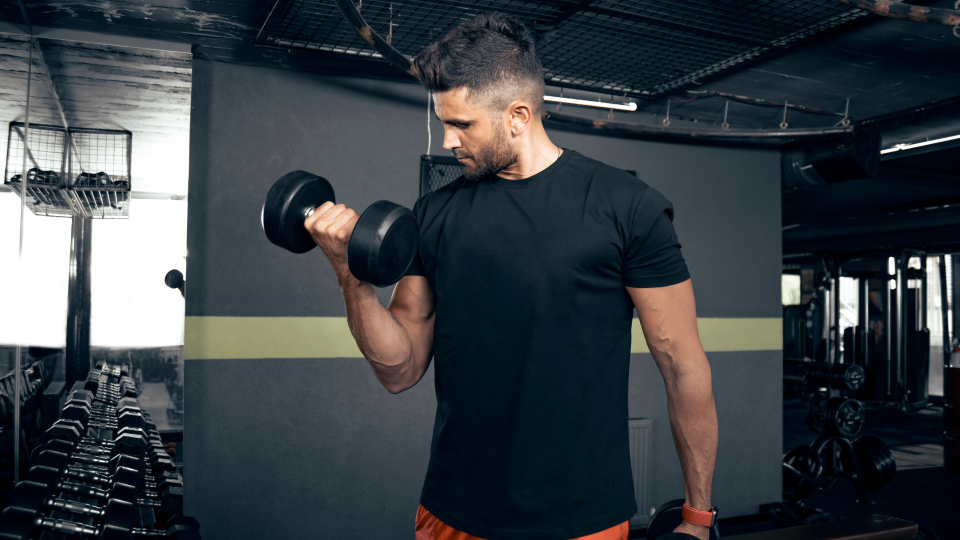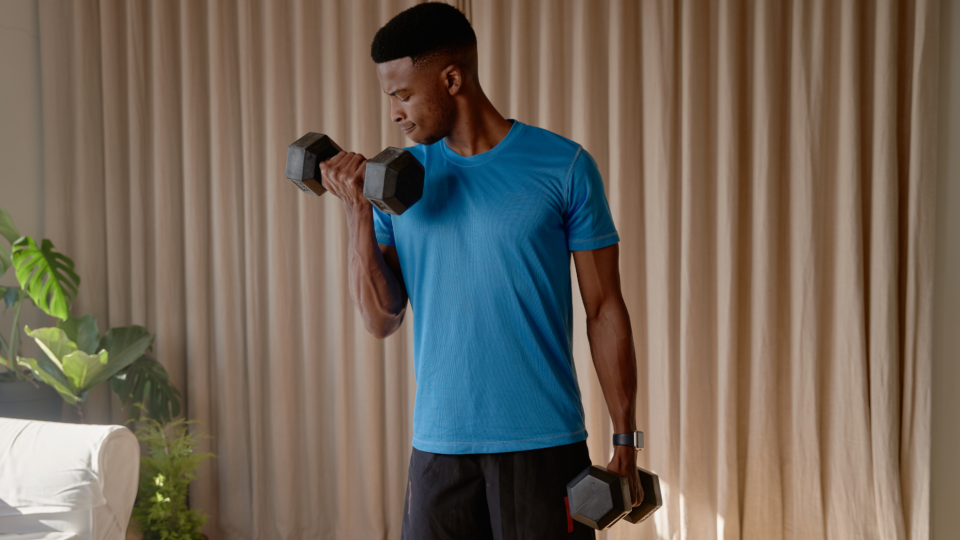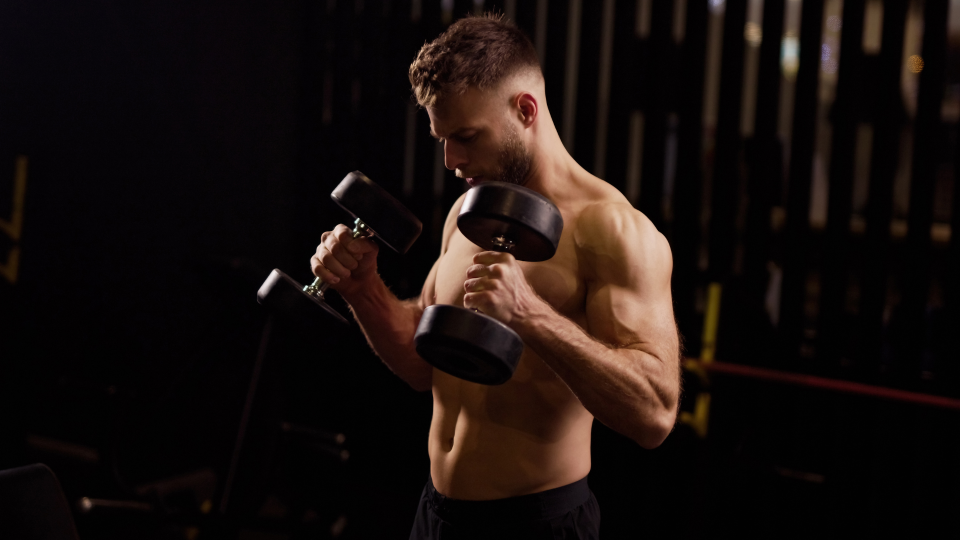It doesn’t matter whether you’re a weekend warrior, a die-hard gym bro, or a seasoned bodybuilder, every man and his dog wants bigger biceps. Maybe it’s because this ‘mirror muscle’ looks impressive in a t-shirt, especially when you’ve got a pump on. But, aside from the aesthetics, strong biceps are essential for helping us with everyday tasks, from lifting to carrying.
The bicep curl and hammer curl are two of the most popular exercises you’ll see on the gym floor. But which is the most effective at adding inches to your biceps? With the help of an expert, we try and answer that very question.
Bicep curl vs hammer curl: what’s the difference?
Although both exercises can be performed with a pair of dumbbells, the main difference between a bicep curl and a hammer curl is your hand position. A bicep curl uses a supinated grip (also known as an underhand grip), while the hammer curl uses a neutral grip (where your palms are facing each other). It’s a subtle change, but it makes a big difference to the muscles targeted.
“The biceps curl targets the short head of the biceps brachii,” says Steve Chambers, Gym Manager and Certified Personal Trainer at Ultimate Performance. “When people flex their biceps, or want to look good in a T-shirt, that’s the muscle your eye is drawn to. Whereas the hammer curl brings the brachialis muscle and your forearm much more into play, which is very effective if increasing the overall ‘thickness’ of your arm is your goal.” They also target the brachioradialis, a muscle in the forearm.
Bicep curl vs hammer curl: benefits

A great thing about both of these exercises is that they’re relatively easy; they don’t require a specific skill to perform, so they’re suitable for beginners through to the advanced athlete. Plus, either exercise can be performed with either dumbbells, a cable machine, resistance bands, or a barbell (if you’re doing bicep curls).
If you want biceps that are rounded and bursting out the front of your t-shirt, then the bicep curl is an excellent choice as it effectively targets the biceps. Strong biceps will also have great carry-over for pulling exercises, such as rows, chin-ups and lat pulldowns. This is because these all rely on elbow flexion, which the bicep is responsible for.
The hammer curl targets more muscles than the bicep curl, so you’ll generally be able to lift more weight doing these. As it targets the brachioradialis (a muscle in the forearm) it’s great for improving grip strength and wrist stability. “Having stronger arms, and a stronger grip, will allow you to lift greater weights, so it’s a win-win,” says Steve.
How to do bicep curls and hammer curls
If you’re not performing the bicep curl or hammer curl properly, with good form, you could be leaving serious gains on the table. Steve breaks down how to perform each exercise properly, either standing or seated on a weight bench.
How to do bicep curls


-
Pick up your dumbbells with an underhand grip and let your arms hang by your sides
-
Lift your chest up, pinch your shoulder blades back together and position your elbows directly below your shoulders
-
Curl the dumbbells up towards your shoulders while keeping your upper arms still and wrists straight
-
You have reached the end of your range of motion when you cannot move any further without your shoulders or elbows pulling forwards
-
Pause for a moment and focus on squeezing your biceps
-
Reverse the motion to return to the start position
How to do hammer curls


-
Grab your dumbbells but this time with your palms facing each other
-
Lift your chest up, pinch your shoulder blades back together and position your elbows directly below your shoulders
-
Bend at the elbows and curl the dumbbell up towards your shoulders, trying to get your thumb to as close to them as possible
-
Pause at the top and squeeze your biceps
-
Return to the start position
Tips:
-
Stick to a weight you can consistently lift without using momentum from your body to help ‘swing’ the weight, this is just cheating
-
Isolation exercises require less full-body effort than compound exercises, so it can be tempting to cut short your rest period short. Stick to the recommended rest interval to give your muscles time to recover and maintain performance levels.
Bicep curls vs hammer curls: which is best for bigger biceps?
If your goal is to purely beef up your biceps, then you can’t go wrong with the bicep curl. “It’s the most effective isolation move if you want ‘rounded’ or ‘peaked’ biceps,” says Steve. “It’s a vanity muscle for sure, but if you want to look good in T-shirts or vests, this is the move for you.”
However, he says that really you should consider both, especially if you want to increase the overall size of your arms. “The hammer curl is really going to target that brachialis muscle I’ve mentioned which, in layman’s terms, is that bulge you see on the side of your arms. What that will do is dramatically increase the overall girth of your arms, so they appear larger and thicker.”
A good question Steve says to ask yourself is this: Do you want big inner biceps that you can flex? Or do you want overall big arms? If you answered biceps, do bicep curls, if you answered bigger arms, do hammer curls, and if you want both, do both.
Source Agencies


